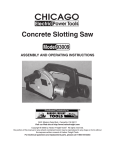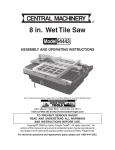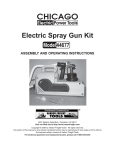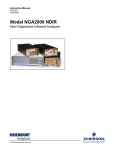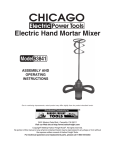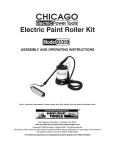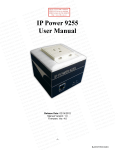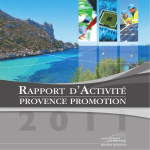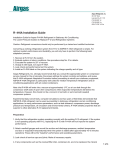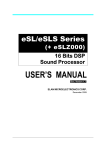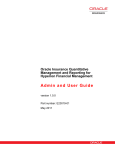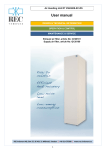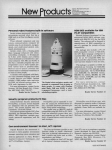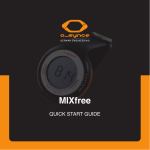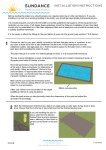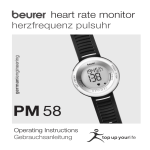Download User Guide for Input Spreadsheet Long-Term - eiopa
Transcript
25 January 2013 User Guide for Input Spreadsheet Long-Term Guarantees Assessment This user guide is not part of the formal LTGA documentation as issued. It is not intended to, and does not, replace the LTGA technical specifications part I and II. EIOPA – Westhafen Tower, Westhafenplatz 1 - 60327 Frankfurt – Germany – Tel. + 49 69-951119-20 Fax. + 49 69-951119-19, Website: https://eiopa.europa.eu © EIOPA 2013 Contents 1 Introduction ..................................................................................................................................... 3 2 Overview of the main input spreadsheet ........................................................................................ 4 3 Participant information ................................................................................................................... 6 4 Current regime ................................................................................................................................ 7 5 Scenario outcomes information ...................................................................................................... 8 5.1 Shared parts among scenarios ................................................................................................ 8 5.2 Scenario sheets...................................................................................................................... 10 Section I – Scenario summary ............................................................................................................ 10 Section II - Sensitivities ...................................................................................................................... 13 Section III – Capital requirements...................................................................................................... 13 Section IV – Details of the Standard Formula .................................................................................... 14 Section IV.1 - Market risks details ..................................................................................................... 15 Section IV.2 – Life underwriting risks details ..................................................................................... 16 Section IV.3 – Health risks details ...................................................................................................... 16 Section IV.4 – Non-life risks details.................................................................................................... 17 Section V – MCR................................................................................................................................. 18 Section VI – Internal Model Results ................................................................................................... 19 Section VII – Liability Cash Flows ....................................................................................................... 20 6 Matching assets and liabilities....................................................................................................... 21 6.1 MA details in the main input spreadsheet ............................................................................ 21 Section I – Valuation .......................................................................................................................... 21 Section II – Spread Risk ...................................................................................................................... 22 6.2 MA details in the dedicated MA input sheet ........................................................................ 23 Section I – Sub-portfolio information ................................................................................................ 23 Section II – Asset structure ................................................................................................................ 23 Section III – Cash flows ...................................................................................................................... 24 7 Overview........................................................................................................................................ 25 8 Qualitative questions .................................................................................................................... 25 9 Updates ......................................................................................................................................... 25 2/25 © EIOPA 2013 1 Introduction 1.1. Participating (re)-insurance undertakings are requested to complete the Long Term Guarantees Assessment (LTGA) based on EIOPA’s “Revised Technical Specifications for the Solvency II valuation and Solvency Capital Requirements calculations (Part I)” of 25 January 2013 (please note the published errata if you are using an earlier version) and EIOPA’s “Technical Specifications on the Long-Term Guarantee Assessment (Part II)” of 25 January 2013. 1.2. In addition, participants in the LTGA exercise are asked to complete the qualitative questionnaire (text document) that was prepared by EIOPA in agreement with the Commission1. 1.3. An essential item of the LTGA package published on the EIOPA website is the input spreadsheet (also called reporting template). The main objective of the spreadsheet is to collect the output from the calculations and partially also the answers to part of the qualitative questions. After completing the LTGA exercise, participants are expected to return to their national supervisory authority by 31 March 2013 the following outputs: 1 Output 1: The completed main input spreadsheet Output 2: The completed dedicated Matching Adjustment spreadsheet including requested details (e.g. cash-flows) for subportfolios applying Matching Adjustment in any of the LTGA scenarios (please note that the spreadsheet focusses on the 10 largest sub-portfolios used) Output 3: The completed Word document provided by EIOPA containing the responses to the questions in the qualitative questionnaire. Output 4 (if applicable): The completed internal model questionnaire in case this is relevant. Please note that Internal Model results may be provided in addition to Standard Formula (SF) results; however, SF results must be provided by all participants. Output 5 (if applicable): Explanations approximations/ simplifications applied during the course of the exercise which deviate from the suggested approximations/ simplifications LTGA – Qualitative Questionnaire, 25 January 2013. 3/25 © EIOPA 2013 contained in the Technical Specifications or in the two dedicated documents provided by EIOPA for the LTGA on Historical Balance Sheets and SCR simplifications. 1.4. The main input spreadsheet (Output 1) and the Matching Adjustment spreadsheet (Output 2) also serves some other purposes: 2 They provide structure to the different steps (re)-insurance undertakings have to undertake in doing the LTGA. They perform some simple calculations such as aggregating individual capital charges. They provide an overview of the outcomes after completing the LTGA. 1.5. This user guide is intended to assist participants in completing the two input spreadsheets (Output 1 & 2). The qualitative questionnaires (Output 3 & 4) should be self-explaining and for Output 5 there is no template provided. 1.6. Any open questions relating to the input spreadsheets or other LTGA documents should be directed to the respective national Q&A contact email address stated on EIOPA’s webpage using the also published Q&A template: https://eiopa.europa.eu/consultations/qis/insurance/longterm-guarantees-assessment/index.html Overview of the main input spreadsheet 2.1. The first sheet [P.Index] provides an overview of the contents of the spreadsheet. The various sheets in the spreadsheet can be easily reached by clicking the relevant [GoTo] link. Other sheets in the spreadsheet contain a [goto index] link to return to the index sheet. 2.2. This guide can also be accessed from the index sheet by following the [GoTo] link behind ‘Explanations on the structure and content of this spreadsheet’ in the top rows of the table of contents or in the sheet [P.Readme]. Sections 2.3. The input spreadsheet contains five sections as will be clear from the index sheet: 1. Participant information – This sheet not only requests participant information and contact details, but also the reporting currency, unit 4/25 © EIOPA 2013 2. 3. 4. 5. 6. and year used in completing the spreadsheet. See section 3 for further details. Current regime information – This sheet asks participants to provide balance sheet information and capital requirements in line with the existing national prudential regime. See section 4 for further details. Scenario outcome information – In this section (re)-insurance undertakings are requested to report the outcomes of evaluating the 12 scenarios of options to be tested in the LTGA. See section 5 for further details. Matching assets and liabilities – In this section contains an overview of the key Matching Adjustment outputs for the 10 largest subsets of the insurance portfolio where a Matching Adjustment has been applied in any of the scenarios. Please note that a separate spreadsheet (Output 1b) is supplementing the information provided in this section. See section 6 for further details. Overview of results – This sheet provides an automatic summary of the results by comparing the prudential balance sheet and capital requirements in the 13 scenarios with those under the current regime. See section 7 for further details. Excel based parts of qualitative questionnaire - In this section participants are asked to provide their responses to parts of the qualitative questionnaire and the matching adjustment addendum. The open questions in the questionnaire and the addendum should be answered in the two separate word documents. See section 8 for further details. Colour codes 2.4. Throughout the input spreadsheet the following colour codes are employed to denote the different types of cells: Data is shared across scenarios (linked to [Shared-20xx] sheet). Input cell to be filled in by the participant. Cell using a formula. Cell with important result using a formula. Empty cell, because it is not relevant for the scenario under consideration. 5/25 © EIOPA 2013 Empty cell. 2.5. All cell types are unlocked, which means that participants can override the formulas if necessary. Most of the cells are prefilled with a minus sign (-) whose meaning is “not filled” to allow a differentiation between missing values and nil values (0). 2.6. Participants should not add or delete any cells, rows or columns in the input spreadsheets as the National Supervisory Authority will otherwise not be able to efficiently process the data submitted. Names of the sheets should not also not be modified. Links to technical specifications 2.7. Throughout the input spreadsheet references to the technical specifications are included next to the input cell. It refers to the section of the technical specifications where that output variable is defined. This section can be accessed from the input spreadsheet by following the [Open] link next to the reference. 2.8. The references and links to the technical specifications in the first two columns can be shown by clicking the plus button in the top left corner of the spreadsheet and hidden by clicking the minus button. 2.9. The hyperlink only works if the correct location of the word version of the two parts of the technical specifications is specified at the bottom of the [P.Index] sheet. The links should work correctly by default if the provided word versions of the technical specifications and the addendum are placed in the same folder as the spreadsheet. 3 Participant information 3.1 Participants should start with filling in the [Participant] sheet. The sheet requests information on: 6/25 © EIOPA 2013 4 The (re)-insurance undertaking for which the spreadsheet is being completed including information on the legal form; The reporting/ accounting basis, type of business, currency, unit and year (2011 for this exercise) used to complete the input spreadsheets; Country of incorporation (in case a branch of a non-EEA legal entity participates), name of first level EEA Supervisor and local registration number. 3.2 The name of the participant, type of business, the potential reporting of internal model data and the reporting currency, unit and year will be displayed in the header of the sheets in the input spreadsheets throughout the file. 3.3 The date of submission can – of course – not be completed until the end of the exercise. Please do not forget to complete the contact information at the bottom of the sheet in order for the national supervisor to be able to ask follow-up questions. Current regime 4.1. The outcomes for the different scenarios will be compared with the balance sheet and capital requirement(s) under the current prudential regime. Therefore, participants are requested to provide this information regarding the existing regime in the current regime sheets as specified below. 4.2. Sheet [BS]: This includes the accounting balance sheet as of year-end 2011 in the form it was reported. The sheet also includes the regulatory Solvency I balance sheet as of year-end 2011. If undertakings have stated in the [Participant] sheet that the accounting balance sheet is used for regulatory reporting, then the balance sheet items will be automatically filled from the [BS] sheet. 4.3. Sheet [BS-SI-Scen-0]: The reconciliation between the Solvency I balance sheet and the Solvency II balance sheet under scenario 0. Participants are requested to provide any relevant details in the reconciliation columns (similarly as it was requested for former QIS exercises). 4.4. Sheet [SI]: The actual Solvency I required and available Solvency Margins as reported for year-end 2004, 2009 and 2011 are to be inserted 7/25 © EIOPA 2013 here.2 Composites should state the margins separately for life and non-life business. 5 Scenario outcomes information 5.1 Participating (re)-insurance undertakings are asked to evaluate thirteen scenarios (numbered 0-12) containing different options for the valuation of liabilities. The outcomes for the balance sheet valued under these options, the capital requirements and the summarised underlying liability cash flows should be entered in the scenario sheets. 5.2 The scenarios include: Scenario 0 (“Scenario without LTG Package”); Scenario 1 (“BASE scenario with LTG Package”); Scenarios 2-3 (“CCP scenarios”); Scenario 4 (“Classic MA scenario”); Scenario 5 (“Extrapolation scenario”); Scenarios 6-7 (“Extended MA scenarios”); Scenarios 8-9 (“Transitional scenarios”); Scenarios 10 (“YE09 scenario”); Scenarios 11-12 (“YE04 scenarios”). Details on these scenarios are provided in section 2.1 of the LTGA Technical Specifications Part II. 5.1 Shared parts among scenarios 5.3 Many items on the balance sheet will remain constant throughout several scenarios with a common reference date. These are contained in the sheets named [Shared – 20xx]. Participants should start filling sheet [Shared – 2011]. 5.4 Sheet [Shared-2011] contains the elements of the year-end 2011 Solvency II balance sheet which are shared across scenarios 0-9 with the common reference date of year-end 2011. 5.5 This sheet should be completed first before starting to complete the scenario specific sheets for scenarios 0-9. The following information needs to be filled: 2 It is acknowledged that the actual Solvency I margins of the historical reference dates cannot be directly linked to the re-valued historical balance sheets for YE04 and YE09 used for this exercise (based on the simplifications proposed by EIOPA). 8/25 © EIOPA 2013 Section 1: Partial Solvency II Balance Sheet including i. All assets (apart from Deferred Tax Assets and Reinsurance Recoverables which will vary by scenario); ii. All liabilities (apart from Technical Provisions and Deferred Tax liabilities which will vary by scenario). 1. Partial balance sheet under Solvency II valuation principle and end 2011 market conditions Assets 2011 - # Investments (neither unit-linked nor index-linked) 0 # - # - # Liabilities 0 Technical provisions - non-life (excluding health) (1) # TP calculated as a whole Best Estimate Risk margin 0 Technical provisions - health (non similar to life) TP calculated as a whole Best Estimate Section 2: Own funds information including ancillary own funds (apart from Excess of assets over liabilities and Net Deferred Tax Assets which will vary by scenario) 2. Own Funds information Basic Own-Fund before adjustment and net DTA Ordinary Share Capital and related Share Premium Initial Funds, Members' Contributions or equivalent Basic Own-Fund Surplus funds (*)Items for Mutuals Subordinated mutual member accounts 2011 - # - # Property (other than for own use) Participations # Intangible assets Deferred tax assets Pension benefit surplus Property, plant & equipement held for own use # Total 0 0 0 0 # Unrestricted Tier 1 # # # # Restricted Tier 1 Tier 2 Tier 3 - - - Section 3: Solvency II capital requirements including information used for: i. Capital requirement for Intangible asset risk; ii. Capital requirement for Operational risk; iii. Capital requirement for non-life risks; iv. Capital requirement for health non similar to life v. Minimum capital requirement information for non-life. 3. Capital requirements Capital requirement for Intangible asset risk Risk-Module level value 0 Capital requirement for Operational risk Premium based risk component 0 The different Solvency II item calculations for the input data into this sheet should follow the LTGA Technical Specifications Part I. Please note that a set of helper tabs has been provided by EIOPA for the LTGA exercise (optional use unless otherwise stated by respective NSA) covering: Discounting Technical Provision simplification Risk Margin Spread risk Concentration risk Counterparty default risk Catastrophe risk 9/25 © EIOPA 2013 - 5.6 The content of sheets [Shared-2004] and [Shared-2009] is in line with the one described above for [Shared-2011]. It should be noted that the balance sheet should be kept constant using the year-end 2011 composition, but revaluing certain asset and liability items as described in the supporting LTGA document and spreadsheet contained in “Simplification 1 for Calculation of Historical Balance Sheets.zip”. 5.7 Again those sheets should be filled before filling the respective scenarios sheets, i.e. [Shared-2009] before [Scen-10] sheet and [Shared-2004] before [Scen-11] and [Scen-12] sheets. 5.2 Scenario sheets 5.8 After completing the shared scenario sheet, e.g. the [Shared-2011] sheet, the time has come to start filling the specific scenario sheets named [Scen-y], e.g. [Scen-0]. 5.9 Participants are recommended to start with the scenarios 0 and 1 (“Base scenario”). The scenarios 2-9 usually differ from the “Base scenario 1” with respect to only one option (apart from scenarios 8 and 9 which differ by two options as “extended” Matching Adjustment and Transitional measure cannot be applied at the same time). Also see Table 1 in section 2.1 of the LTGA Technical Specifications Part II for an overview of how the different scenarios vary from the “Base scenario 1”. In many cases the calculations performed for the “Base scenario 1” can be re-used for other scenarios. Section I – Scenario summary 5.10 Generally, all participants are requested to fill all 13 scenarios on a best efforts basis. However, not all sets of options will be relevant for all participants, e.g. participants might not have suitable business to fulfil conditions for certain types of Matching Adjustments tested (e.g. in scenario 4). I - Scenario summary Status of this scenario sheet: 5.11 Scen-1 N/A If a specific scenario is not applicable, participants can indicate this in the top-left corner of the scenario sheets by setting the sheet status to ‘N/A’. This makes it clear that an option included in a specific scenario does not lead to any changes compared to the benchmark scenario. The same drop10/25 © EIOPA 2013 down menu should also be used to assign the ‘filled’ status to the sheet if all cells are completed. A scenario sheet with a ‘filled’ status will automatically appear in the [Overview] sheet. Status of this scenario sheet: 5.12 Filled As a first step in completing a scenario sheet, participants should value the moving parts of the Solvency II balance sheet. These are Best estimate of technical provisions; Risk margin; Deferred tax liabilities and deferred tax assets; Reinsurance/ SPV recoverables. Scenario balance sheet assets # Scenario balance sheet liabilities Total Investments 0 # Reinsurance / SPV recoverables 0 # -# 0 0 0 0 0 - - -# -# 0 - - - Non-life - Health (non-life) 0 - - -# -# 0 - - 0 - - -# 0 # 0 - - Deferred tax assets -# 12 Other assets 0 # 0 # 0 Non-life excluding health Health similar to non-life Health similar to life Life with profit sharing Life without profit sharing Index-linked and unit-linked Assets held for unit-linked Total balance sheet value RM BE As a whol e Technical provisions - Health (similar to life) - Life with profit sharing - Life w/out profit sharing - Index/Unit-linked Deferred tax liabilities Other liabilities -12 Excess of assets over liabilities 5.13 The (adjusted) basic risk-free interest rate curves and inflation curves that participants will need for the valuation of the Solvency II balance sheet in the different scenarios are provided in a separate excel-sheet included in the LTGA package (Appendix DC5 to the LTGA Technical Specifications Part II). Please also note that TP and Discounting helper tabs have been made available as well as examples for the calculation of the Matching Adjustment. 5.14 Additional information on the balance sheet is requested as well including future discretionary benefits and the related reinsurance share plus the modified duration of assets and liabilities. Reinsurance share of FDB Additional information on the balance sheet -# - Total future discretionary benefits (FDB) Modified duration of assets (in years) 5.15 -# - Modified duration of liabilities (in years) Besides the balance sheet information, a summary of the different LTG elements and the amount of TP using each of the elements needs to be given. It should be noted that following the prioritisation for the different measures provided in section 2.2 of the LTGA Technical Specifications Part 11/25 © EIOPA 2013 In II, only for scenarios 0, 11 and 12 the “None” value in the last row should be different from zero as in all other scenarios CCP applies which covers all insurance obligations and has priority versus not applying any LTG measure. Ventilation of TP (without risk margin) by LTG applied 0 Total - MA: Classic - MA: Extended - Transitional - CCP 0 None 5.16 For scenarios that apply the transitional measure, information is required on the weighted average transitional discount curve applied and on the modified duration of the liabilities that the transitional curve is applied to. Information on transitionals - Average discount rate - Modified duration 5.17 The own funds table is filled automatically and requires no user input. Own funds Available # Eligible Elig. [IM] 0 # 0 0 Total to meet MCR 0 # 0 0 of which Tier 1, unrestricted 0 # 0 0 of which Tier 1, restricted 0 0 0 of which Tier 2 # 0 # 0 0 of which Tier 2 (SCR, not MCR) 0 # 0 0 of which Tier 3 (SCR, not MCR) 0 # 0 0 Total to meet SCR 5.18 The overview table on the meeting of capital requirements has one input cell where participants need to indicate whether they are providing Internal Model results alongside the Standard Formula results. Input options are “None” (no IM results), “Full” (full IM used) and “Partial” (partial IM used). 12/25 © EIOPA 2013 MCR SCR 0 0 - Full Meeting of capital requirements 0 Capital requirements [standard formula] 0 Overall Surplus (+) / Shortfall (-) Coverage ratio Q: Kind of internal model information used - - Capital requirements [internal model] - - Overall Surplus (+) / Shortfall (-) - - Coverage ratio Section II - Sensitivities 5.19 Section II is only relevant for scenarios 1 and 6. Details on the sensitivities are provided in Section 5 of the LTGA Technical Specifications Part II. 5.20 For scenario 1, only sensitivities a)-e) are relevant. For scenario 6, all sensitivities, i.e. a)-i), are relevant. Participants are requested to provide high-level estimates of the relative impact on TP, SCR and OF when changing a specific condition of the scenario, e.g. for sensitivity a) it is assumed that no CCP applies while all other conditions stay unchanged. II - Sensitivities Scen-6 a) If there was no CCP - On net CCP On risk Own Funds - b) If the CCP application would be restricted to liabilities with a duration > 7 years - - c) If the "classic" MA was subject to alternative conditions - - - d) If assets under the "extended" MA are invested in an hypothetical portfolio - - - - e) Netting shortfalls and surpluses for the "extended" MA application ratio calculation - - - - f) If a strict cash flow requirement was to be applied to the "extended" alternative MA - - - - g) If a fixed cash flow requirement was to be applied to the "extended" alternative MA - - - - h) If a credit quality limit was to be applied to the "extended" alternative MA - - - - i) If the "extended" alternative MA was done with the extended MA conditions for MA level - - - - Please provide an estimation of the relative impact on your financial position: 5.21 On TP On TP>>MA On SCR - If, for instance, in sensitivity a) the impact on TP of removing the CCP would be an increase by 10%, the cell in the “On TP” column should be filled with “10%”. The column “On TP >> MA” should be filled with the relative amount that the portion of TP applying Matching Adjustment increases due to the change of conditions for applying the Matching Adjustment. This column is therefore only relevant for sensitivities d)-i). Section III – Capital requirements 5.22 In the details of available own funds, participants are requested to fill the adjustments for participations for Tier 1 unrestricted, Tier 1 restricted and Tier 2. All other cells are filled automatically. 13/25 © EIOPA 2013 - III - Capital requirements Scen-1 Details of available own funds Total # Tier 1 (Un.) Tier 1 (r ) 0 0 0 # 0 # Part shared accross scenarios Excess of assets over liabilities 5.23 Basic own funds # Ancillary own funds Tier 2 Tier 3 0 Tier 2 0 Inte Tier 3 0 0 0 Net deferred taxes asset # 0 Ring-fencing restrictions 0 Basic own funds before adjustments 0 # 0 # 0 0 0 0 Adjustments for participations (-) 0 # - - - 0 The table containing the major results of the Standard Formula capital requirements calculations need three user inputs: Two relating to the Adjustments for loss absorbency (Adj): i. Post stress net deferred taxes ii. Requirement for op. in accordance with Art. 4 of Directive 2003/41/EC (transitional) One relating to the diversification impact of ring-fenced funds (based on Notional SCR) Main results of the capital requirements according to the standard formula defined in the LTGA technical specifications (Part 1) Adjustments for loss absorbency (Adj) Di vers i f. Gros s ri s k Adj. Risk module Net ri s k 0 # 0 Adjustment for loss absorbency (AdjTP) 0 # 0 0 Intangible asset risk Magnitude of the DT shock 0 # 0 0 0 0 0 Market risk Post stress net deferred taxes - # 0 0 0 0 0 Counterparty default risk -# 0 0 0 0 0 Life underwriting risk # 0 0 0 0 0 Health risk # 0 0 0 0 Non-Life underwriting risk # 0 0 0 0 Operational risk -# 0 - 0 0 Ring fenced funds (based on Notional SCR) Deferred taxes adjustment (AdjDT) Requirement for op. in accordance with Art. 4 of Directive 2003/41/EC (transitional) 5.24 # Expos ure Total adjustment for loss absorbency 0 0 Basic Solvency Capital Requirement (BSCR) 0 Furthermore, participants with ring-fenced funds (RFFs) are required to provide details for the 7 main RFFs plus all other RFFs. Ring fenced funds information # (net risks, notional SCR and OF restrictions) Counterpa r ty defa ul t ri s k Ma rket ri s k Li fe underw. ri s k Hea l th ri s k Non-Li fe underw. ri s k Noti ona l SCR Own funds res tri cti on <Main ring fenced fund> # - - - - - - - <2nd ring fenced fund> # - - - - - - - <3rd> # - - - - - - - <4> # - - - - - - - <5> # - - - - - - - <6> # - - - - - - - <7> # - - - - - - - All others RFF (sum) # - - - - - - - Section IV – Details of the Standard Formula 5.25 Participants are requested to provide the following inputs: Default pre-stress values for scenario based stresses for assets and liabilities; Gross and Net SCR for counterparty default risk of type 1 and 2; 14/25 © EIOPA 2013 Split of TP based risk component by life obligations total (including unit linked), life obligations unit-linked and non-life obligations. IV - Details of std formula Scen-1 Default pre-strss values for scenario based stresses Pre-stress assets - Pre-stress liabilities - Capital requirement for Intangible asset risk Risk-Module level value 0 Capital requirement for Operational risk Expos ure Di vers i f. "A" pa ra m Expos ure Gros s ri s k Adj. Capital requirement for Market risks Net ri s k 0 0 0 0 Risk-Module level values 50.0% 0 0 0 Interest rate risk 0 0 0 Equity risk 0 0 0 Property risk 0 0 0 Spread risk 0 0 0 Currency risk 0 0 0 Concentration risk 0 0 0 Counter-cyclical premium risk 0 Di vers i f. 0 0 0 Capital requirement for Counterparty default risk 0 Risk-Module level values - 0 - SCR for counterparty default risk of type 1 - 0 - SCR for counterparty default risk of type 2 Gros s ri s k 0 Adj. Net ri s k Risk-Module level value 0 0 0 Capital requirement for life underwriting risks 0 Risk-Module level values Premium based risk component 0 0 0 0 Stress on Mortality TP based risk component 0 0 0 0 Stress on Longevity Tech. Prov. for l i fe obl i ga tions - 0 0 0 Stress on Disability Tech. Prov. for l i fe obl i ga tions - UL - 0 0 0 Lapse Tech. Prov. for non-l i fe obl i ga tions - 0 0 0 Expenses Annual expenses for UL (12 months) 0 0 0 0 Revision 0 0 0 CAT Expos ure Capital requirement for non-life risks Di vers i f. 0 Gros s ri s k 0 Adj. Net ri s k Risk-Module level value 0 0 0 Capital requirement for health risks 0 Risk-Module level values Premium & Reserve risk 0 0 0 0 Health NSLT Lapse risk (mass schock) 0 0 0 0 Health SLT CAT 0 0 0 0 Health CAT Expos ure Di vers i f. Gros s ri s k 0 Adj. Net ri s k Section IV.1 - Market risks details 5.26 Participants are requested to provide the following inputs for all market risks apart from concentration risk: Pre-stress values for assets and liabilities; The same without the Loss-Absorbing Capacity (LAC) of technical provisions; Stress values for assets and liabilities including the LAC of technical provisions. In order to allow using the template with multiple currencies exposures, For a given currency, the stressed values without and with LAC should be the same as the pre-stress values when the downward stress is not the most onerous on a net basis. 5.27 Participants are requested to provide the following inputs for concentration risk: Gross and next scenarios based stress values 15/25 © EIOPA 2013 IV.1 - Market risks details Scen-1 SCR.1.8 SCR.2.4 Market risk components Stress scenario # # Pre-s tres s va l ues As s ets Open Open Scenario based stressed values Wi thout LAC Li a bi l i ties As s ets Li a bi l i ties Gros s ri s k Adj. 0 Interest rates risk values # Scenario used for CorrMkt determination # Interest rates altered upward # - - - - Interest rates altered downward # - - - - Wi th LAC Net ri s k As s ets Li a bi l i ties 0 0 0 0 0 - - 0 0 0 - - 0 0 0 Down Equity risk values Equity risk under article 304 # 0 0 0 Stress on the equity Type 1 # - - - - 0 0 0 - - Stress on the equity Type 2 # - - - - 0 0 0 - - 0 0 0 Equity risk on other assets and liabilities # Stress on the equity Type 1 # - - - - 0 0 0 - - Stress on the equity Type 2 # - - - - 0 0 - - Property stress and risk values # - - - - 0 0 0 0 - - Spread risk values # 0 0 0 Spread on bonds and loans # - - - - 0 0 0 - - Spread on repackaged loans # - - - - 0 0 0 - - Spread on credit derivatives # 0 0 0 Scenario kept for credit derivatives # Down Upward shock on credit derivatives # - - - - 0 0 0 - - Downward shock on credit derivatives # - - - - 0 0 0 0 - - 0 0 Currency risk values # Currency stress upward (sum over currencies) # - - - - 0 0 0 - - Currency stress downward (sum) # - - - - 0 0 - - Concentration risk values # 0 - 0 - CCP risk # 0 0 0 - - - - - - Section IV.2 – Life underwriting risks details 5.28 Participants are requested to provide the following inputs for all life underwriting risks: Pre-stress values for assets and liabilities without Loss-Absorbing Capacity (LAC); Stress values for assets and liabilities with LAC. IV.2 - Life underwriting risk Scen-1 Life underwriting risk compoents Stress scenario # # Pre-s tres s va l ues As s ets Scenario based stressed values Wi thout LAC Li a bi l i ties As s ets Li a bi l i ties Gros s ri s k Adj. Wi th LAC Net ri s k As s ets Li a bi l i ties Stress on Mortality # - - - - 0 0 0 - - Stress on Longevity # - - - - 0 0 0 - - Stress on Disability - Morbidity # - - - - 0 0 0 - - Stress on lapse # 0 0 0 Scenario retained for lapse risk # Lapse risk - lapse up # - - - - 0 0 0 - - Lapse risk - lapse down # - - - - 0 0 0 - - Lapse risk - mass # - - - - 0 0 0 - - Expenses # - - - - 0 0 0 - - Revision # - - - - 0 0 0 - - CAT # - - - - 0 0 0 - - Down Section IV.3 – Health risks details 5.29 Participants are requested to provide the following inputs for all life underwriting risks apart from concentration risk: Technical provisions for 16/25 © EIOPA 2013 i. ii. iii. Gross i. ii. iii. Medical expense insurance; Income protection insurance; Workers' compensation insurance. and net risk values for CAT health split by Mass accident, net of mitigation Concentration scenario, net of mitigation Pandemic scenario, net of risk mitigation IV.3 - Health risk Scen-1 Expos ure Capital requirement for non-SLT health risk SubRisk-Module level value Di vers i f. 0 Adj. Net ri s k SLT health sub-risk 0 0 0 0 0 0 0 SubRisk-Module level values 0 Stress on Mortality 0 Stress on Longevity 0 TP - workers ' compens a tion i ns ura nce - 0 0 Stress on Disability Premi ums - medi ca l expens e i ns ura nce - 0 0 0 Lapse option Premi ums - i ncome protection i ns ura nce - 0 0 0 Expenses Premi ums - workers ' compens a tion i ns ura nce - 0 0 0 Revision TP - medi ca l expens e i ns ura nce TP - i ncome protection i ns ura nce Expos ure Di vers i f. 0 5.30 Gros s ri s k 0 Gros s ri s k Adj. Net ri s k - 0 0 Health CAT 0 SubRisk-Module level values - Mass accident, net of mitigation - 0 - Concentration scenario, net of mitigation - 0 - Pandemic scenario, net of risk mitigation 0 0 Furthermore, participants are requested to provide the following inputs for all life underwriting risks relating to Health Similar to Life (SLT) components: Pre-stress values for assets and liabilities without Loss-Absorbing Capacity (LAC); Stress values for assets and liabilities with LAC. SLT health risk components Stress scenario # # Pre-s tres s va l ues As s ets Scenario based stressed values Wi thout LAC Li a bi l i ties As s ets Li a bi l i ties Gros s ri s k Adj. Wi th LAC Net ri s k As s ets Li a bi l i ties Stress on Mortality # - - - - 0 0 0 - - Stress on Longevity # - - - - 0 0 0 - - Stress on Disability - Morbidity # 0 0 0 Medical expenses # 0 0 0 Scenario kept for medical expenses # Medical expense up # Medical expense down Income protection Down - - - - 0 0 0 - - - - - - 0 0 0 - - - - - - 0 0 0 - - Stress on lapse (mass) # - - - - 0 0 0 - - Expenses # - - - - 0 0 0 - - Revision # - - - - 0 0 0 - - Section IV.4 – Non-life risks details 5.31 Participants are requested to provide the following inputs for lines of business (LoBs): Volume measure DIV (apart from non-prop reinsurance and credit/ suretyship LoBs) 17/25 © EIOPA 2013 Volume measure PCO V(Res) IV.4 - Non-Life risk Premium & Reserve risk Volume measure Combined standard deviation Combined standard dev. x Volume meas. Segment Motor vehicle liability Motor, other classes Marine, aviation, transport (MAT) Fire and other property damage Third-party liability Credit and suretyship Legal expenses Assistance Miscellaneous Non-prop. reinsurance - casualty Non-prop. reinsurance - MAT Non-prop. reinsurance - property Scen-1 0 0 0.0% Standard deviation 0 Overa l l Vs x Overa l l s # Overall s Reserve V x Sigma Premium V x Sigma Premium PCOlob Vres DIVlob Vprem 0.0% 0 0 9.5% 10.0% 0 50.0% - 0 0.0% 0 0 10.0% 8.0% 0 - - 0 0 # 0 # 0.0% 0 0 14.0% 15.0% 0 - - 0 0.0% 0 0 11.0% 8.0% 0 - - 0 0 # 0 # 0.0% 0 0 11.0% 14.0% 0 - - 0 0.0% 0 0 19.0% 12.0% 0 100.0% - 0 0 # 0 # 0.0% 0 0 9.0% 7.0% 0 - - 0 0.0% 0 0 11.0% 9.0% 0 - - 0 0 # 0 # 0.0% 0 0 15.0% 13.0% 0 - - 0 0.0% 0 0 20.0% 17.0% 0 100.0% - 0 0 # 0 # 0.0% 0 0 20.0% 17.0% 0 100.0% - 0 0.0% 0 0 20.0% 17.0% 0 100.0% - 0 Pre-s tres s va l ues 5.32 Reserve 0 # 0 # As s ets Non-life mass lapse risk Volume measure Overall Vs 0 # Pos t s tres s va l ues Li a bi l i ties - As s ets - Li a bi l i ties - - Furthermore, post-stress asset and liability values should be provided for non-life mass lapse risk. Section V – MCR 5.33 Participants are requested to provide the following inputs: Absolute floor of MCR including national life and notional non-life Net (of reinsurance) best estimate provisions for all non-life LoBs and all types of life obligations – please provide separate data for composite as indicated in the spreadsheet Net (of reinsurance) capital at risk 18/25 © EIOPA 2013 V - MCR Scen-1 Minimum Capital Requirement MCR [standard formula] 0.0 MCR [Internal model] 0.0 MCR final calculations calculations Non-Life Linear MCR Life 18.26 0.0 Com posite Notional Non-Life Notional Life - - - - 0 - - SCR or notional SCR [Internal model] - - - MCR combined [internal model] 0 Absolute floor of MCR MCR or Notional MCR [Standard formula] 0 - - - MCR or Notional MCR [Internal model] 0 - - - SCR or notional SCR [standard formula] MCR combined [standard formula] 9.80 - - Section VI – Internal Model Results 5.34 Please take note of paragraph 3.2 and 5.18 in case you are providing internal model results. 5.35 Participants are requested to provide the following inputs in this section: Diversification with standard formula SCR calculated with the PIM SCR calculated with the standard formula Indication of which SF risks are covered in the IM and the respective Gross and Net risk values (where applicable) – please also pick one of the three comparability options Listing of all other risks covered in the IM and the respective Gross and Net risk values Risk margin according to the internal model Aggregation of PIM risks based on linear correlation? (yes/no) 19/25 © EIOPA 2013 VI - Internal model Scen-1 SCR - Diversification with standard formula - SCR calculated with the PIM - SCR calculated with the standard formula - Risk covered Risks value Gross Net Covered ? # - Risk margin according to the internal model - Agregation of PIM risks based on linear correlation ? Comparability of IM risk components with standard formula -# -# - - Standard formula used - - Standard formula used -# -# - - Standard formula used - - Standard formula used -# -# - - Standard formula used - - Standard formula used -# -# - - Standard formula used - - Standard formula used -# -# - - Standard formula used - - Standard formula used Spread risk in market risk Other risk 1 -# - - Standard formula used # - - Other risk 2 # - - Other risk 3 # - - Intangible asset risk Market risk Counterparty default risk Life underwriting risk Health risk Non-Life underwriting risk Operational risk Ring fenced funds Art 4 of Directive 2003/41/EC CCP risk in market risk Section VII – Liability Cash Flows 5.36 Participants are requested to provide up to 90 years of liability cash flows split by Lines of business in the first table Long-Term Guarantee bucket/measure VII - Liability cash flows Scen-1 By lines of business Total # - # Value reported in the balance sheet Year Non-Li fe Hea l th (NL) hea l th (SLT) - Li fe WP - Li fe - # # - - - - - - - 2 - # - - - - - - - 3 - # - - - - - - - 4 - # - - - - - - - 5 - # - - - - - - - 6 - # - - - - - - - # Other (CCP) 0 # MA - MA Ext - - Li fe Tota l # Other (CCP) MA MA Ext 1 0 # - - - 2 0 # - - - 3 0 # - - - 4 0 # - - - 5 0 # - - - 6 0 # - - - UL FDB Tra ns i ti ona l Transitional Year - - Tota l Li fe WP FDB - Total Value reported in the balance sheet Hea l th (NL) hea l th (SLT) UL - 1 By LTG buckets Non-Li fe - Tota l Pa i d-i n - - Transitional included in MA Future - Tota l - Pa i d-i n - Future - Section VIII – Specific segmentation 20/25 © EIOPA 2013 5.37 For scenario 0, participants are requested to provide the segmentation of their portfolio of insurance liability valued using the Scenario 0 parameters, but segmented according to the split made in Scenario 1 and 8. Value in scenario 0 of obligations segmented according to the segmentation used in Scenario 1 MA: Classic MA: Extended CCP Value in scenario 0 of obligations segmented according to the segmentation used in Scenario 8 MA: Classic Transitional CCP 6 Matching assets and liabilities 6.1 Participants are requested to provide specific information for the subportfolios that apply Matching Adjustments under any of the different scenarios tested. A high-level summary of the information is requested in the main input spreadsheet. However, given the importance and complexity of the Matching Adjustment measure, participants should also provide further information in a dedicated Matching Adjustment spreadsheet. 6.1 MA details in the main input spreadsheet Section I – Valuation 6.2 The sheet [ALM] contains high-level details for the 10 largest subportfolios (measured by asset value). Different tables are to be filled for the different scenarios: For scenarios 1, 2 and 3 the table is combined For scenarios 8 and 9 the table is combined All other scenarios have individual tables to be filled 6.3 In the first table for scenario 1, the names of the sub-portfolios should be stated. These are then automatically filled in the further tables. 6.4 The respective details required to be input for each sub-portfolio include: 21/25 © EIOPA 2013 Asset value at YE11 Form of MA: Classic, Extended, Extended – split – (this refers to the application of the split option for insurance obligations) or Neither Annual effective rate to obtain asset value when using it for discounting asset cash flows Annual effective rate to the best estimate of liabilities (= Basic Risk Free Rate) Weighted Average Fundamental Spread applied across the sub-portfolio Discounted cash flow shortfall over best estimate of liabilities (materiality criteria used to assess the mismatch) - not relevant for the “Extended” alternative MA Best estimate used in the balance sheet I - Valuation In scenarios 1, 2, 3 Name of the sub-portfolio Annual effective rate Form of to obtain Assets value to obtain # adjustment end 2011 assets value BE(BRFR) Spread of DiscountedMA used in investment Fundament cash-flowbalance return over al spread shortfall / sheet RFR BE # BE in balance sheet <name 1> - # Classic - - - - - - - <name 2> - # Extended - - - - - - - <name 3> - # Extended (split) - - - - - - - <name 4> - # Neither - - - - - - - <name 5> -#- - - - - - - - <name 6> -#- - - - - - - - <name 7> -#- - - - - - - - <name 8> -#- - - - - - - - <name 9> -#- - - - - - - - <name10> -#- - - - - - - - Section II – Spread Risk 6.5 Furthermore, gross and net spread risk values should be given for each sub-portfolio in each scenario. Details on the impact of the Matching Adjustment on Spread Risk Charge are provided in the LTGA Technical Specifications Part II in Section 4.11. II - Spread risk Name of the sub-portfolio <name 1> <name 2> <name 3> <name 4> <name 5> <name 6> <name 7> <name 8> <name 9> <name10> Name of the sub-portfolio <name 1> <name 2> Scenario 0 # Scenario 1 Scenario 4 Spread risk on the asset portfolio (gross) Scenario 6 Scenario 7 Scenario 8 Scenario 10 Scenario 11 Scenario 12 -# -# - - - - - - - - - - - - - - - - -# -# - - - - - - - - - - - - - - - - -# -# - - - - - - - - - - - - - - - - -# -# - - - - - - - - - - - - - - - - -# -# - - - - - - - - - - - - - - - - Scenario 0 # Scenario 1 -# -# Spread risk on the asset portfolio (net) Scenario 6 Scenario 7 Scenario 8 Scenario 4 Scenario 10 Scenario 11 Scenario 12 - - - - - - - - - - - - - - - - 22/25 © EIOPA 2013 6.2 MA details in the dedicated MA input sheet 6.6 The spreadsheet contains individual information for each sub-portfolio stated in the [ALM] sheet of the main input spreadsheet. A separate sheet is included for each of the 10 largest sub-portfolios in this dedicated MA input spreadsheet. Section I – Sub-portfolio information 6.7 Participants are requested to input in each of the sheets (i.e. for each subportfolio individually) Name of the undertaking Name of the sub-portfolio (this should be aligned with the name used in the [ALM] sheet in the main input sheet) Type of portfolio (ring-fenced, ring-fencible, separately managed or separately manageable) Types of risk covered should provide insights on the type of obligations contained in the sub-portfolio I - Sub portfolio information Name of undertaking Name of sub portfolio Type of portfolio Types of risk covered - 1 Information reported in the LTG spreadsheet, in slot (1 to 10): Information on assets and limits Annual effective rate Spread of Discounte Information reported in the LTG Fundame MA used BE in Eligible Of which MA on Form of to obtain investme d-cashto obtain spreadsheet and information on asset ntal in balance balance adjustment assets assets CQS3 CQS3 nt return flowlimits applied spread sheet sheet BE(BRFR) value over RFR shortfall / In scenarios 1, 2, 3, 5 In scenario 5 In scenario 4 In scenario 6 In scenario 7 In scenarios 8, 9 In scenario 10 In scenario 11 In scenario 12 6.8 Furthermore, a summary table is provided containing information regarding the use of Matching Adjustment for this portfolio in the different scenarios. Section II – Asset structure 23/25 © EIOPA 2013 6.9 For each of the sub-portfolios, participants need to provide a breakdown of the eligible assets for the Matching Adjustment: Government bonds split by home country, other EEA and other NonEEA Corporate bonds split by financial, industrial, utility and other Cash/ liquid overnight assets Other eligible Other eligible (Scenario 6 only) Other non-eligible (Scenario 6 only) 6.10 All eligible assets need to be further split out by credit quality step. A mapping of credit quality steps is provided in Appendix MA1 of the LTGA Technical Specifications Part II. And the average duration needs to be provided by participants as well. II - Asset structure Breakdow n by credit quality step at end 2011 # end 2004 end 2009 end 2011 value value value Avg. Duration (in years) Other/not relevant Assets of the assigned portfolio # Sovereign bonds Home country (own currency) Other EEA (own currency) Other sovereign Total corporate bonds Of which financial Of which industrial Of which utility Of which others Liquid overnight assets # 0 0 0 0 0 0 0 0 0 0 - # - - 0 - - - - - - - - # - - 0 - - - - - - - - # - - 0 - - - - - - - - # 0 0 0 0 0 0 0 0 0 0 - # - - 0 - - - - - - - - # - - 0 - - - - - - - - # - - 0 - - - - - - - - # - - 0 - - - - - - - - # - - 0 - - - - - - - - Scenario 6 specific information Other eligible assets Other non-eligible assets # # # 0 end 2011 value - - 1 2 3 4 5 or 6 Breakdow n by credit quality step at end 2011 0 1 2 3 4 Avg. Duration (in years) Other/not relevant 5 or 6 0 - - - - - - - - 0 - - - - - - - - Section III – Cash flows 6.11 For each of the sub-portfolios, participants need to provide the following cash flow details: The two components required to determine the degree of mismatch, i.e. discounted cash flow shortfalls over BE of liabilities (see MA Step 3 in Section 4 of the LTGA Technical Specifications Part II) – separately for Scenario 6 vs all other scenarios Liability inflows and outflows for all future years – separately for Scenario 6 vs all other scenarios 6.12 Five separate table requires the input of: Government bond cash flows for the 10 largest country exposures Financial corporate bond cash flows by credit quality step Industrial corporate bond cash flows by credit quality step 24/25 © EIOPA 2013 Other corporate bond cash flows by credit quality step Other eligible asset cash flows by credit quality step III - Cash flows Best estimate (with BRFR) (A) of liabilities (B) of cash flow shortfalls Mismatch ratio : (B) / (A) # # - - - # - - - # - - - Governements Corporate Other assets Totals assets Liabilities Net # liabilities # Year Scenario 6 specific information on application ratio Best estimate (with BRFR) (A) of liabilities (under stressed assumptions) (B) of cash flow shortfalls Mismatch ratio : (B) / (A) end 2011 end 2009 end 2004 Value: Value: Value: - Scenario 6 Liabilities Value: Nominal Nominal Nominal Nominal out-flows cash flows cash flows cash flows cash flows in-flows end 2011 Net liabilities in-flows out-flows 1 # 0 - - 0 0 0 0 0 - - 2 # 0 - - 0 0 0 0 0 - - 3 # 0 - - 0 0 0 0 0 - - 4 # 0 - - 0 0 0 0 0 - - # Country 1: Country 2: Country 3: Country 4: Country 5: Country 6: Country 7: Country 8: Country 9: Government bonds, top 10 exposures # # Year Nominal Nominal Nominal Nominal Nominal Nominal Nominal Nominal Other countries Nominal Nominal # cash flows cash flows cash flows cash flows cash flows cash flows cash flows cash flows cash flows cash flows 1 # - - - - - - - - - - 2 # - - - - - - - - - - 3 # - - - - - - - - - - 4 # - - - - - - - - - - 5 # - - - - - - - - - - Credit # quality Credit step 0quality Credit step 1quality Credit step 2quality stepCredit 3 quality step > 3 Financials # Value: Value: Value: Value: Value: Net of # - - 2 # - - - - - - - - 3 # - - - - - - - - 4 # - - - - - - - - 5 # - - - - - - - - Overview 7.1. 8 Net of defa ul t & downgra de 1 Year 7 Net of defa ul t & downgra de Nominal Nominal Nominal Nominal Nominal defa ul t & # cash flows cash flows cash flows cash flows cash flows downgra de # - The [Overview] sheet gives an overview of the main outcomes in the thirteen scenarios: a condensed version of the Solvency II balance sheet, Own Funds (OF), the Solvency Capital Requirement (SCR), Minimum Capital Requirement (MCR) and a summary of the Technical Provisions (TP). Qualitative questions Please see qualitative questionnaire for references to the spreadsheet. 9 Updates Not yet relevant 25/25 © EIOPA 2013

























